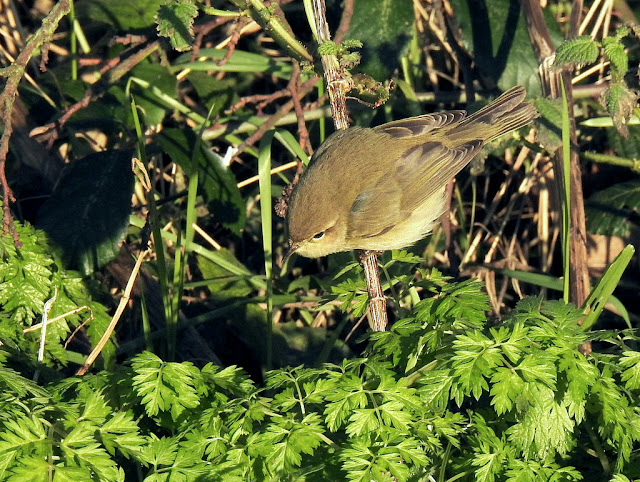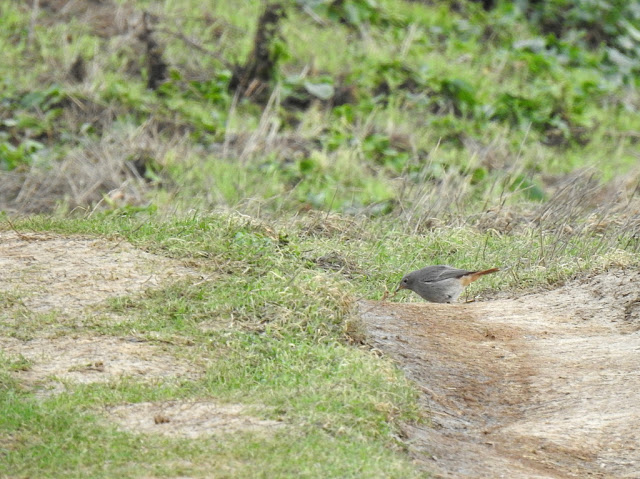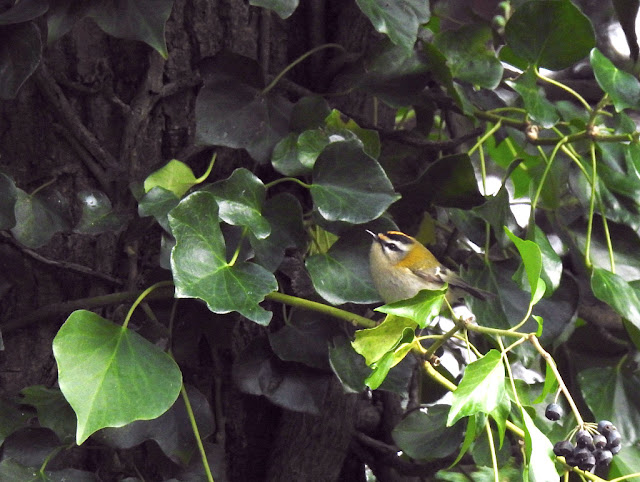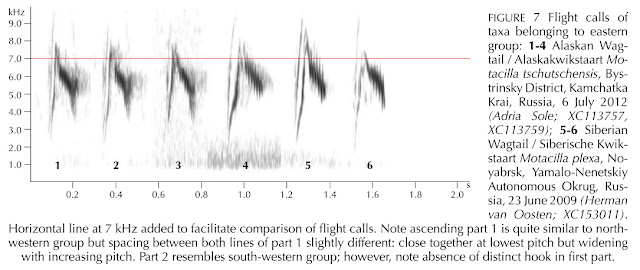According to Google, 'off-piste' simply means 'away from prepared ski-runs'. The
term is frequently applied to all sorts of non-ski activities of course, and
here is a lovely example from my Twitter feed yesterday...

|
|
Living and birding on Barra is pretty off-piste in its own right but, as
Bruce demonstrates beautifully, it is still possible to take things to another level.
|
In the definition above, the word 'prepared' struck me. A huge amount of
birding could be classed as 'prepared'. An obvious example being your local
reserve, with its circular walks and hides. In fact, almost any popular location, be it a coastal hot-spot or inland reservoir, is 'prepared'
to some extent. A maybe less obvious example: the ubiquitous bird news that
impels us to go here or there, to see this or that, in company with many
others. Yep, 'prepared ski-runs' is arguably what this all is.
I've never been skiing, but assume that folk are encouraged to stay on the
prepared runs because going off-piste could be dangerous. Birding-wise ditto.
Very dangerous. You might miss stuff, or see less than everyone else. And
there is another danger, which I'll come to shortly.
In truth, off-piste birding can be very rewarding of course. There might be
the odd, crazy rarity for some. But Harlequin Ducks and their ilk are
exceedingly few and far between, so what else can we expect? I suppose that
depends on how broadly we apply the principle. A step further than off-piste
locations are off-piste topics. Last year's
littoralis Rock Pipit
project springs to mind. I mean, who does that? To a lesser extent,
sinensis Cormorants too, I guess. I enjoy this kind of stuff
very much.
On Twitter I follow one birder who studies the movements and habits of birds
using a stretch of the N Kent coast; how they are influenced by tides,
disturbance, etc. Very off-piste. And another who enjoys working out the vis-mig flight lines
in his local Surrey hills, and umpteen other off-piste activities...
I mentioned another danger, didn't I?
I cannot help noticing that the few NQS blog posts which feature big rarities,
or some other unambiguously spectacular content, generally get the biggest
viewing figures. I have to accept that my writing is unlikely ever to appeal to the masses. Because, yep, off-piste is largely boring to others.
Recently, my Twitter feed has been full of two particular birds. A stunning
adult Sabine's Gull and, until its recent departure, a 2nd-winter
Laughing Gull. Both undeniably photogenic and lovely, yet I did not
for a moment feel inclined to visit either. I honestly cannot explain why.
Don't get me wrong, this is not a moral choice or an anti-twitching thing -
far from it - I simply am not interested. No, I would rather bore my small and
sorely-tried readership with 'Continental' Cormorants...
A few days ago, before I got this stinking cold, I realised that my walk up
the Mangerton River valley could be spiced up massively by squinting through
the hedge around the two-acre Mangerton fishing lake. While trying to work out whether
those two Cormorants on the distant, unfrozen bit might be sinensis, a
Kingfisher flew in and perched up in the bankside vegetation behind them.
Result! No pics of the Kingfisher, but...

|
Well, that Cormorant on the left is sinensis, for sure.
|
And earlier that day, in West Bay Harbour...

|
Definitely sinensis, this was one of [probably] two.
|
Suddenly they're everywhere. Mind you, they're only visible because I'm
off-piste right now.
While I'm in West Bay I ought to show you these pics too...

|
The recent cliff fall. Now that the East Cliffs have got that little unpleasantness out of their
system, evidently there is no danger of further collapse anywhere else
along this notoriously unstable stretch. I mean, those folk on the beach
can't be wrong, can they?
|

|
| Frost-art |
So, yes, I have a stinking cold, and feel lousy. But stir-craziness made me
wrap up this afternoon and shuffle off down the river behind our place.
Highlights were a Goldcrest, a Bullfinch, 2 Great-spots, and 3 Chiffs. The
latter were all together at one point, feeding in a sun-kissed patch of short
vegetation. Mostly they were creeping about in it like mice, but very
occasionally perched up in view. A sheer joy to watch...
More boring stuff soon.
Definitely no Harlequins.

























































